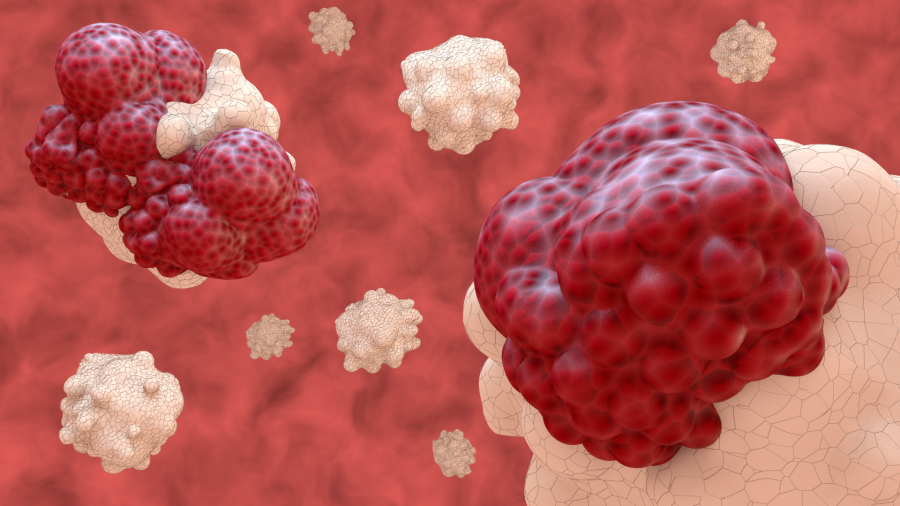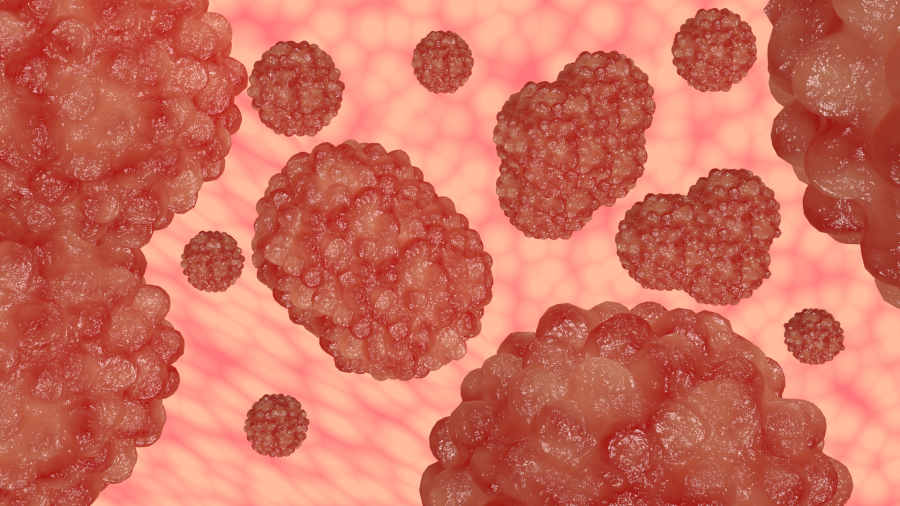
For many Blender artists, going professional doesn’t seem like a viable option until they’ve become proficient in 3D, with years of modeling and animation under their belt. Steven Russell from Scotland didn’t want to wait that long; instead, he chose a niche field where his current skillset is an advantage. Today, he creates 3D models for nanoscience.
I don’t consider myself an outstanding Blender artist. In fact, whenever I compare my work to the other amazing renders I see out there, I am continually humbled about how much I want to improve.
My professional experience hasn’t been in 3D either. I was initially enrolled in a post-graduate course in Edinburgh, Scotland, and I wasn’t very happy with it. I started looking for a way to branch out and find something I actually enjoyed doing.
I discovered Blender and decided to give it a try. I’ve been hooked from day one and knew that this was my calling, but I had no idea how to turn it into a career. I didn’t have years to become a superior user and I had to make something happen fast.
I Saw an Opportunity at my School

During my studies, I saw how open the scientific community was to collaborate with a wide range of people, which got me thinking. I also noticed that the standard images found in scientific journals look like they're made in PowerPoint; basically, there is a lot of room for improvement.
Also, scientists are primarily interested in experiment design and data sets, so they don't have much time to invest in the images they do for their papers. I saw an opportunity there to bridge the gap between the arts and sciences.
I decided to go for it and created a website offering my services, ScienceConcept3D.com. Next, I set out to land my first project.
This turned out to be as easy as sending an email to Dr. Roberto de la Rica at Strathclyde University in Glasgow and asking if he'd be interested in a few 3D renders of the stuff he was working on.
The Images Match my Current Skill Set
One of the reasons I am interested in pursuing collaborations in the sciences is because the images generally need to be simple and straightforward without a lot of embellishment, so it's a good match for my current skill set.
I deliberately reached out to someone doing nanoscience because it's not the kind of thing that you can see with the naked eye and it cannot be photographed, so it seemed like the perfect field to offer my services.
My Render is Now in a Nanoscience Journal
The paper was accepted in a science journal called Small, dedicated to nanoscience with the title "Light-Triggered Inactivation of Enzymes with Photothermal Nanometers", a method involves irradiating nanorod-bound enzymes with near-infrared light.

The image I created shows a gold nanorod that has been decorated with hair-like polymers made of polyethylene glycol. When floating around in a solution, the polymer hairs catch a protein called avidin, which in turn catches a complementary molecule of biotin, which then catches a specific enzyme.
The Project Took No More Than 5 Hours

The process was a dynamic collaboration with Dr. de la Rica via email. After a brief description of the kind of image he was looking for, I made a set of drafts of the gold nanorod with different types of polymer hair-styles. He picked the style that was most accurate, and then we moved on to the protein and repeated the same process.
He gave me a description and a few reference images, and then I created a set of images and sent them over to see which one was best. Following this process throughout the project, we were able to keep the image as true to the science as possible. Overall, I'd say this project took about 5 hours over the course of a week.
Creating the gold nanorod was easy. In edit mode, I split a UV sphere in half and extruded that half into a rod shape. As for the material, it has an anisotropic shader set to a gold color. I made the polymer hairs with a particle generator that emits from a smaller rod shaped mesh that is nested inside the gold nanorod. The avidin protein is a cone mesh that I tweaked a bit in edit mode with a glass material applied to it.
The biotin is a UV sphere with a diffuse shader, plain and simple. The enzymes are path curves that I arranged into spirals and then converted into meshes that I then modified slightly to give them some thickness.
This particular collaboration with Dr. de la Rica was done for free, as I am trying to build up a portfolio and turn my website into a business and I'm very happy to have a render published as a first step in realizing this goal.
After 8 Months with CG Cookie, I’m Where I’ve Set Out To Be

I’ve been asked about my advice to other Blender artists. First of all, subscribe to CG Cookie; the tutorials are high quality. I started off learning Blender with YouTube tutorials and quickly got lost in a sea of information.
On YouTube, everyone has their own take on how to do things, and the inconsistency among videos is more confusing than helpful.
I find CG Cookie tutorials to be consistent and they progress step-by-step, which really helps me get a deeper understanding of how the software works.
After about 8 months of learning with CG Cookie tutorials, I'm finally getting to that point where when I want to make something, I can just go for it without having to watch a 10 minute tutorial for every step of the process. It's really a powerful feeling to have an idea and make it come to life like that.
Setting Daily Goals is Key
A huge thing for me has been to set daily goals. At the end of the day, I sit down and look at what I have and what I want to do the next day, and I write it down (I have a simple post-it note app that sends me a reminder in the morning).
That way, when I wake up the next day, I don't have to spend time wondering what to do next or procrastinating due to a lack of clear goals. I get up and get started and usually just the act of starting is enough to motivate me to accomplish a little something everyday. In the beginning my daily goals start with something like "watch a CGC tutorial on X, and then do X". Now it's more like "block out the model for X" or "do UV mapping for X". Especially now that my projects are getting bigger, daily goals help me keep perspective.
Getting Clients is Easier Than You Might Think

Thirdly, as far as collaborating or gaining clients, there is a big world of 2D images out there just waiting to be made into 3D models. While it is a little intimidating at first, just reaching out to someone and offering to make their 2D images into 3D models is a good way to start networking.
At the moment, I am offering to do this for free in order to develop my skills and gain experience, but it looks like the networking that I am doing is starting to pay off.
My first render is published in the nanoscience journal and I am mentioned in the acknowledgements section of the paper. Dr. Roberto de la Rica whom I collaborated with also goes to large international conferences where he gives presentations in front of hundreds of other scientists here in Europe and also in the US, and now my renders are going to be included in these conferences.
Additionally, I am making small animations with these 3D models that can help to explain the scientific concepts to a large audience. With this kind of exposure, I hope to gain new clients and start charging money in order to start a small business in this area.
I’ve achieved this at no cost; just the time investment of creating the renders for free.
We are Working on a Research Project Using AR
Dr. de la Rica and myself are already working on another project in which I will have a more central role. We are working on a diagnostic system that incorporates augmented reality into the design, testing urine for bio-markers of cholesterol, carcinogens, hormone levels, and other bio-indicators.
The diagnostic produces an array of patterns, which is where I come in; I am currently experimenting with target-image detection with Vuforia (an augmented reality extension available for Unity). I am trying to design an AR app that can read the array of dots through a smartphone and interpret it and give a personalised diagnosis and medical advice.
Another project I have in the works in a 3D game using Unity (which I also am learning thanks to CG Cookie) in order to help educate people about nano-science. There are a lot of grants out there that provide funding for projects related to public engagement in the sciences, and, to me, a video game seems like one of the best mediums for this.
It's kind of a maze-runner game through a system of blood vessels where the main character, a group of gold nano-particles, has to work its way through the blood stream, read different bio-markers in order to gain "keys" to progress through different levels, ultimately working towards to detection of a tumor and its elimination with photo-thermal therapy.
See more of Steven’s work at ScienceConcept3D.com
Start modeling in Blender fast: our "Modeling in Blender" Learning Flow helps you beat the learning curve and create your first models in a couple of hours.
